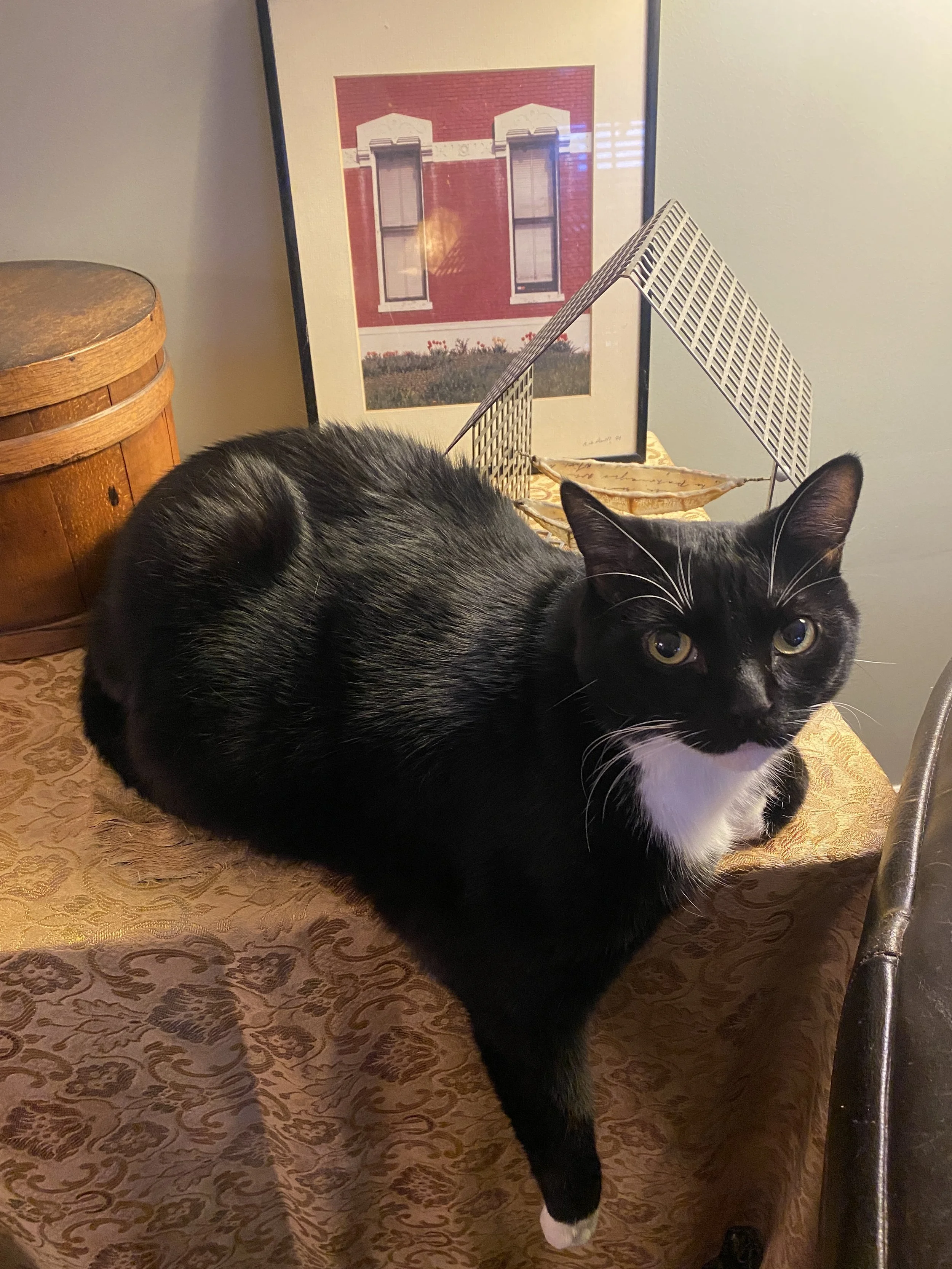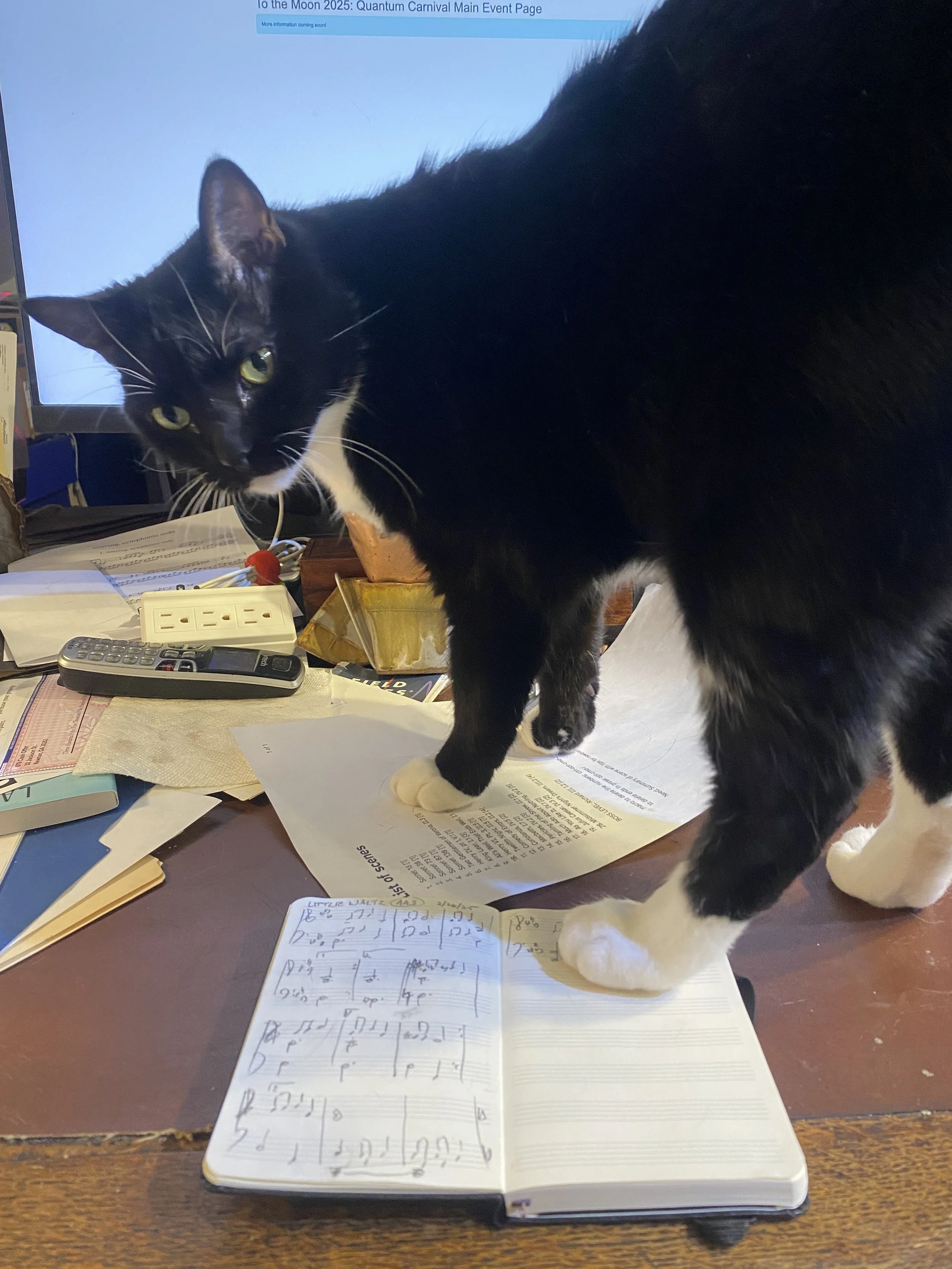Behold the power of TASK AVOIDANCE!
/You, as the casual observer of Lichtenbergianism, might have justifiably assumed that since I realized with a shock last week that I had composed half of the Ten Little Waltzes and that I had ABORTIVE ATTEMPTS for at least five more in the pipe — you might, I say, have assumed that I would have ripped them out this week and presented you with the completed opus.
But let’s not talk about that. Instead, look at my shinyperfect new project, which I am naming The Cecil Project for legal reasons at the moment. Hold that thought.
First, here’s Cecil the Pest™:
As we say in alternate text for all his photos, he’s a “handsome, if dim-witted, tuxedo cat.” He’s close to one end of whatever spectrum cats can be placed on. His love language is chewing on you. Through the skin.
Here is Cecil, being the anti-Assistive Feline™.
This is his usual posture, either on my work or keyboard, or standing between me and the monitor. He is a blob. His heart’s desire is to have his butt trigger every function key on my keyboard.
At any rate, since Cecil the Pest™will be right at my elbow as I work on this project, we will nickname it The Cecil Project.
What is this Cecil Project? It’s essentially a programmatic symphony inspired by one of my favorite characters in one of my favorite book series. I will not bore you — or the author’s lawyers — with any details, but it could be a whizbanger of a piece.
As the universe would have it, I was poking around my old music files and came across this piece, originally intended as an ABORTIVE ATTEMPT for the second movement. It’s kind of a love scene, and this segment is quite lovely. It is not even close to what I think the finished piece will be — that will have a lot more push and pull to it — but it’s pretty enough to listen to a couple of times.
Here’s the score: II. Andante, from The Cecil Project [pdf]
And here’s the mp3:
So now I can not only practice TASK AVOIDANCE by switching between Little Waltzes, I can now über-practice TASK AVOIDANCE by switching between projects. (This piece was also a good way to start expanding my MuseScore practice into orchestral scoring. The strings sound a bit laggy here; I may need to check out other soundfiles.)




